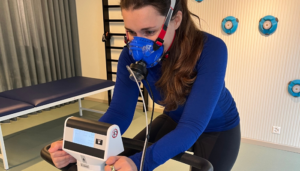Have you noticed the growing buzz around “mitochondria” and “mitochondrial health,” especially in discussions about longevity and healthy ageing?
These tiny powerhouses, mitochondria, are drawing attention for a crucial reason: they play one of the most vital roles in your body. Survival is impossible without them.
Any irregularity in your mitochondria can directly impact your health. In fact, the decline in mitochondrial function is recognised as one of the hallmarks of ageing. Its dysfunction is increasingly linked to chronic diseases like Alzheimer’s, Parkinson’s, and heart disease.
This Avea article takes you on a fun journey into the world of mitochondria—because, let’s face it, biology can be cool.
We’ll uncover why these tiny energy factories are so critical to your survival, how they start to lose their edge as you age, and the chain reaction that follows.
But it’s not all doom and gloom—scientists are cooking up ways to breathe new life into these cellular engines, potentially helping you age like fine wine. Shall we?
In this article
Why are mitochondria so special?
Mitochondria are double-membrane cellular organelles with bacterial origins (yes, you read it correctly) that show exceptional features, distinguishing them from other components of the cell.

Here’s the thing—your mitochondria have their own little set of instructions called mitochondrial DNA (mtDNA), and yep, it’s exclusively inherited from your mother.
Even though they only carry the code for 37 genes, those are critical for essential enzymatic processes that keep your cells powered up.
But mitochondria aren’t just static powerhouses. They’re dynamic, adjusting in size, number, and shape based on what your cells need.
They also have a pretty cool self-cleaning system—dividing to make more and degrading the faulty ones to keep the cell’s energy game strong. Meaning, you’re left with a healthy population of mitochondria.
What is the main function of the mitochondria?
If you are familiar with the subject, you might already know that mitochondria are often — if not always — referred to as the “powerhouses” of the cell.
But what does that actually mean?
Consider a car, which needs an engine to move. Picture this engine converting fuel into the power required for the vehicle to move and transport you to your desired destination.
Just as a car’s engine burns petrol to produce energy that drives the wheels, mitochondria burns nutrients from your diet to produce ATP (adenosine triphosphate), the energy currency that your cells need to perform their activities.
Well, it’s hardly surprising that, though found in nearly every human cell type, mitochondria are particularly abundant in muscle cells and brain cells, which demand greater energy.
Other functions of the mitochondria
Whilst mitochondria are best known for their role in energy production, they also perform several other vital functions within your cells.
1. Cell death
Mitochondria play a key role in apoptosis, which is your body’s way of getting rid of damaged or deteriorating cells.
When a cell is marked for death, mitochondria release a protein called cytochrome C. This sets off a chain reaction, activating caspase enzymes that ultimately lead to the cell’s destruction.
Disruptions in this process lead to serious issues like cancer, where cells that should die continue to survive and grow unchecked.
2. Calcium atorage
Calcium isn’t just about strong bones; it is vital for many biological processes, including neurotransmitter release, hormone secretion, blood clotting, muscle function, and fertilisation.
Mitochondria act like tiny storage units, quickly absorbing and releasing calcium ions when needed. This balance is essential for keeping your cells running smoothly and ensuring that your body responds properly to various signals.
3. Heat production
To generate heat, especially when exposed to cold, your body can use brown fat tissue. Mitochondria in brown fat produce heat through a process called proton leak, known as non-shivering thermogenesis. This process is most active in infants, who are more susceptible to cold, and gradually decreases with age.
The link between mitochondria and ageing
Reflecting on the car analogy, consider the exhaust produced by the car’s engine.
Whilst this exhaust is an inevitable consequence of the engine’s operation, it contains pollutants that, over time, can harm the environment.
Similarly, as your mitochondria convert nutrients into ATP, they also produce reactive oxygen species (ROS), similar to the exhaust in our car analogy.
Under normal conditions, ROS act as signalling molecules in various cellular processes. However, an accumulation of ROS becomes problematic.
Excess ROS lead to mutagenesis in both nuclear and mitochondrial DNA, a process known as oxidative stress.
Oxidative stress damages the mitochondrial respiratory chain and the mitochondrial defence system, significantly contributing to inflammation, cellular senescence and mitochondrial dysfunction.
But ROS production isn’t the only factor causing mitochondrial dysfunction.
Other factors include:
- genetic mutations
- environmental toxins
- lifestyle choices (poor diet, lack of exercise, alcohol intake, drug consumption, smoking, etc).
At the cellular level, these disruptions can impair energy production, leading to cellular damage and death.
Since you’d be dead within seconds without mitochondria, this is quite crucial.
When they malfunction, your cells can’t produce the energy needed to function properly, leading to severe health consequences.
This dynamic relationship between mitochondrial dysfunction, ROS production, and ageing is central to our exploration of longevity.
Throughout your life, the cumulative effects of oxidative stress and mitochondrial inefficiency lead to a gradual decline in your body’s physiological capabilities.
This increases your susceptibility to age-related conditions such as neurodegenerative diseases and cardiovascular diseases.
Mitochondria are believed to significantly contribute to the development of age-related neurodegenerative diseases, including Alzheimer’s, Parkinson’s, and Huntington’s diseases.
Given the high energy requirements of neurons, they are particularly vulnerable to disturbances in mitochondrial performance.
So, do you see the importance of nurturing your mitochondrial health as a fundamental strategy for enhancing longevity? Let’s find some easy-to-implement tips to boost your mitochondrial health.
What your mitochondria need for flourishing
To keep mitochondria functioning at their best, they require a range of specific inputs and a stable environment:
- Essential chemicals: These include NAD+, CoQ10, oxygen, and vital nutrients, all crucial for energy production and mitochondrial health.
- Healthy mitochondrial membranes: Intact membranes are necessary for maintaining the internal environment and proper functioning of mitochondria.
- Antioxidants: Needed to neutralise and detoxify reactive oxygen species (ROS), protecting mitochondria from oxidative damage.
- Energy carriers: NADH, FADH2, and ATP are essential to fuel cellular activities and ensure mitochondria can meet the energy demands of the body.
How to take care of your mitochondria?
Given their central implication in ageing, inflammation and cellular senescence, mitochondria are a key target in anti-ageing research.
Strategies to address mitochondrial dysfunction focus on
- enhancing mitochondrial biogenesis (formation of new mitochondria)
- improving mitochondrial function
- reducing oxidative stress
Here are several strategies you can use to take care of your cell’s powerhouses.
1. Exercising
Engaging in regular physical activity has a profound impact on your mitochondria.
Exercise triggers key cellular pathways, notably activating the protein PGC-1α, which is crucial for increasing both the number and function of mitochondria.
This process, known as mitochondrial biogenesis, enhances mitochondrial quality by promoting mitophagy—removing damaged mitochondria to support overall cellular health.
Exercise also helps maintain a balance in mitochondrial structure, crucial for efficient energy production and managing oxidative stress, ultimately protecting against metabolic disorders and boosting cellular resilience.
2. Top 10 supplements supporting mitochondrial health
At Avea, we are committed to enhancing the very core of your well-being, focusing on the health of your mitochondria.
Longevity supplements for mitochondrial health

- Packed with premium longevity ingredients.
- Boosts cellular renewal and energy production.
- Supports collagen production for youthful skin.
- Recommended by biohackers and health experts.
Antioxidants are a must-have in your supplement routine for boosting michondrial health. They play a crucial role in neutralising free radicals, effectively protecting your mitochondria from oxidative stress. This protection is key to maintaining optimal cellular energy and overall vitality.
1. Coenzyme Q10 (CoQ10): the energy catalyst
CoQ10 is crucial for ATP production in mitochondria, enabling your cells to generate the energy needed for all bodily functions. Additionally, CoQ10 acts as an antioxidant, protecting mitochondria from oxidative damage, ensuring they work efficiently and stay healthy.
2. Magnesium: the energy converter
Magnesium is essential for ATP synthesis, helping mitochondria convert food into energy. It also stabilises mitochondrial membranes, maintaining their integrity and function, which is key to sustaining your overall vitality.
3. Vitamins (D3, K2, B vitamins): the mitochondrial support system
- Vitamin D3 supports mitochondrial energy production and calcium regulation, crucial for cellular health.
- Vitamin K2 ensures calcium is directed to bones, maintaining cellular health without burdening mitochondria.
- B vitamins boost NAD+ synthesis, which is essential for efficient ATP production and cellular repair in mitochondria.
4. NAD+ precursors (NMN): the longevity booster
NMN elevates NAD+ levels, enhancing mitochondrial efficiency in ATP production. It also activates longevity pathways that support mitochondrial health, improving physical and mental performance.
NAD+ activates pathways like SIRT1 and AMPK, which help regulate energy metabolism, mitochondrial function, and cellular repair. This support enhances physical and mental performance, better sleep, and overall well-being.
5. Iron: the oxygen transporter
Iron is a key component in the mitochondrial electron transport chain, necessary for efficient energy production. Adequate iron levels ensure your mitochondria can function properly, preventing fatigue and supporting overall energy levels.
6. Selenium: the cellular shield
Selenium is a powerful antioxidant that protects mitochondria from oxidative stress. It supports enzymes like glutathione peroxidase in neutralising free radicals, preserving mitochondrial function and promoting efficient energy production.
7. Alpha-Lipoic Acid (ALA): the versatile defender
ALA is a unique antioxidant, both fat- and water-soluble, making it exceptionally versatile in protecting mitochondria from oxidative damage. It also helps in the removal of heavy metals from your body, which can otherwise hinder mitochondrial function. By reducing oxidative stress, ALA supports overall mitochondrial health and energy production.
8. Acetyl-L-Carnitine: the energy transporter
Acetyl-L-Carnitine plays a crucial role in transporting fatty acids into mitochondria, where they are converted into energy. This process is vital for maintaining mitochondrial efficiency, particularly in ageing cells, and supports cognitive function, muscle recovery, and overall mitochondrial health.
9. D-Ribose: the cellular energiser
D-Ribose is a sugar molecule that serves as a building block for ATP, the primary energy carrier in cells. By supporting ATP production, D-Ribose helps replenish energy stores in mitochondria, making it especially beneficial for those with chronic fatigue or recovering from intense physical activity.
10. NAC (N-Acetyl Cysteine): the antioxidant precursor
NAC is a precursor to glutathione, one of the body’s most potent antioxidants. It plays a key role in reducing oxidative stress within mitochondria, protecting them from damage, and supporting overall cellular health. By boosting glutathione levels, NAC helps maintain mitochondrial function, promoting energy production and resilience against cellular stress.
3. Diet
Anti-inflammatory foods: Incorporating polyphenol-rich foods like berries and nuts into your diet not only provides antioxidants but also supports mitochondrial function by reducing oxidative stress. Studies show that polyphenols can enhance mitochondrial biogenesis and improve mitochondrial respiration. Learn the top 10 longevity diet tips.
4. Fasting
Intermittent fasting: Limiting food intake periodically has been shown to activate mitochondrial biogenesis and improve mitochondrial efficiency. Research indicates that fasting can trigger autophagy, a process where cells clean out damaged mitochondria, thereby improving overall cellular health.
5. Stimulating Heat Shock Proteins
Cold and heat exposure: Exposing your body to extreme temperatures stimulates the production of heat shock proteins, which play a critical role in repairing and maintaining mitochondria. Studies suggest that cold exposure can increase mitochondrial function and enhance endurance by boosting mitochondrial biogenesis.
6. Yoga and meditation
Mindfulness practices: Engaging in yoga and meditation can positively affect mitochondrial health by reducing stress and promoting mitochondrial biogenesis. Research shows that stress reduction can lower mitochondrial oxidative stress, improving overall function .
7. Light exposure
Sunlight: Just 10 minutes of sunlight can stimulate mitochondrial activity and increase energy production. Sunlight exposure triggers the production of nitric oxide, which has been linked to improved mitochondrial function and cardiovascular health.
Keynote from Avea
Mitochondria are at the core of your energy production and overall cellular health. By understanding and nurturing these tiny powerhouses, you can significantly impact your well-being and longevity.
Through targeted lifestyle changes, including diet, exercise, and the right supplements, you can protect and even enhance mitochondrial function, supporting a healthier, more vibrant life as you age.
Start focusing on your mitochondria today—they’re essential to your vitality and longevity.











